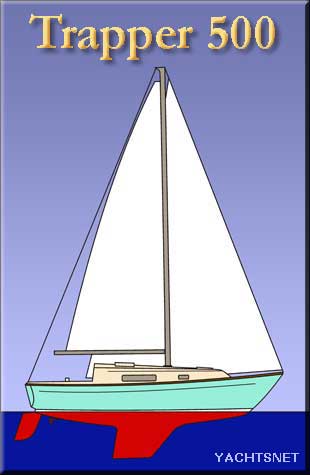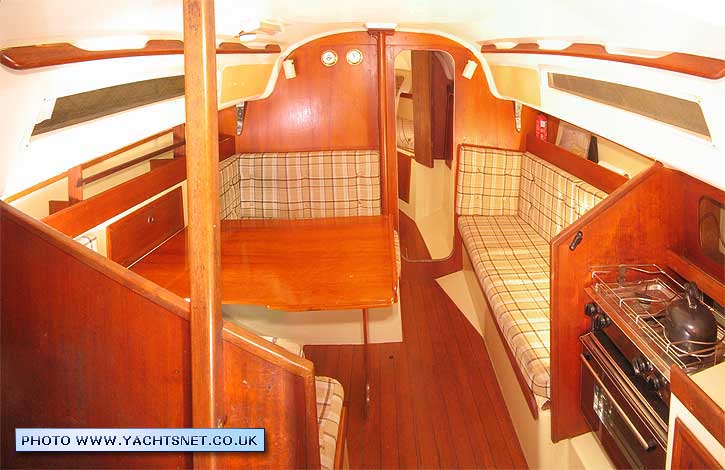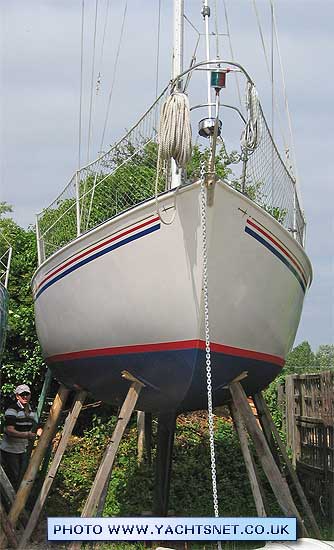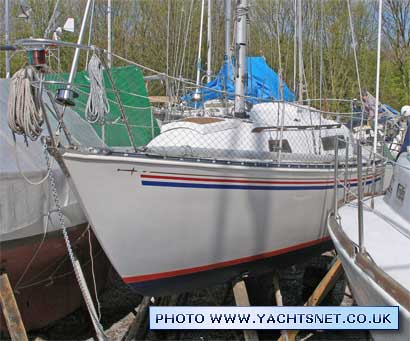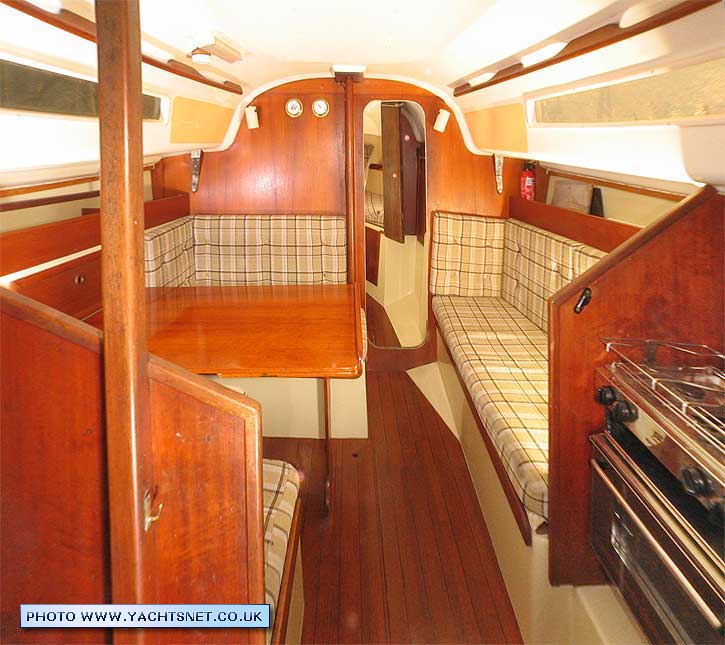| |
|
|
|
|
|
|
|
| © Yachtsnet Ltd. 2000/2025 |
|
|
|
| |
|
|
Yachtsnet's
archive of boat details and pictures
|
| |
The following information and photographs are
displayed as a service to anyone researching yacht types. HOWEVER THE PHOTOGRAPHS AND TEXT ARE COVERED BY COPYRIGHT, AND MAY NOT BE REPRODUCED WITHOUT THE PERMISSION OF YACHTSNET LTD. Details and photographs
are normally based on one specific yacht, but could be a compilation.
No reliance should be placed on other yachts of the same class being
identical. Where common variations exist, we have endeavoured
to indicate this in these archive details. |
Trapper 500 and 501 |
Brief details
|
Builder |
Ansteys, Poole, later Trapper Yachts Ltd, Bursledon
Bridge, Southampton. |
The Trapper 500 appeared
originally in 1970 in North America as the C&C 27 from the design
board of the Canadian team Cuthbertson and Cassian. From 1972 to
1980 they were also built by Anstey Yachts in Poole, which company
then changed its name to Trapper Yachts, and contracted out the
hull moulding to Northshore. In 1980
the design was modified slightly to become the Trapper 501, which
remained in production until 1987. |
LOA |
27' 4" |
Sail area |
317 sq ft main and working jib
|
LWL |
23' 0" |
Rig |
sloop |
Beam |
9' 2" |
Cabins |
2 |
Draught |
5' 0" fin keel or 3' 6" bilge keels (rare) |
Berths |
5/6 |
Displacement |
5,175 lbs |
Engine |
various diesels |
Ballast |
2,250 lbs |
BHP |
8 - 18 |
Keel type |
Normally iron fin keel with spade rudder, but a
few early boats had lead keels, and a very few later model 500s
had twin iron bilge keels |
|
|
The original USA-built C&C
27s had sharks-fin-shaped lead keels, as did the first few
boats built in England in 1972. This was however very soon
changed to flat bottomed iron keels, with a slightly lower
ballast weight, increasing light wind performance, whilst
still retaining a good ballast ratio, and also being better
suited to drying out. The rudder on Trapper 500s extends beyond
the transom, which gives good control, but is vulnerable if
berthing stern-to if left in its normal sailing position.
On Trapper 500s the rudder blade will actually rotate through
360 degrees, allowing it to be completely reversed for light
tiller loads when going astern, and can be left in this reversed
position when berthed, avoiding an overhang.
In 1980 the design was upgraded to the Trapper
501, which has slightly more headroom and a redesigned keel,
along with more conventional rudder stops. A few bilge keel
Trapper 501s were also built.
'Yachting Monthly' described the Trapper 500/501 as "....
a popular all-rounder, well balanced and easy to handle for
family pottering, yet capable of offshore cruising and even
gentle racing"
|
|
|
|
